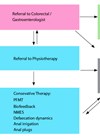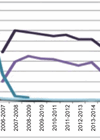Features
Delivering a trainee-led Urolink educational programme – my experience in Tanzania
In May 2023, I travelled to Moshi, Tanzania, where I visited Kilimanjaro Christian Medical Centre (KCMC) – a trip which was made possible through the collaborative efforts of the British Association of Urological Surgeons (BAUS) Urolink and with the support...
Urology National Selection: tips and tricks for a successful interview process
We invited Dominic Brown, the top-ranking candidate from the Urology National Training Selection Interview 2023, to share his wisdom on the interview process. Dominic is currently an ST3 working in North West London. Kelly Ong, Urology News Trainees Sub-Editor. 1....
Urology around the world: India: past, present, and future
Past India has the largest population in the world, standing at 1.43 billion as of September 2023. This vast population across a huge geographical area brings unique healthcare challenges, including the full range of urologic conditions. Urology is a relatively...
The bulbocavernosus reflex
Despite its first discovery predating the early-1940s, clinical application of the bulbocavernosus reflex (BCR) has been limited to date. The BCR traditionally involves contraction of the bulbo- and ischiocavernosus pelvic floor muscles, often referred to as the ‘bulbocavernosus muscle’, in...
The Re-humanising Revolution: Breaking the conspiracy of silence
Over the last few years, the mental and emotional wellbeing of those who work in medicine has come under scrutiny. The author introduces a new resource. Working in healthcare has always been stressful but never more so than today. In...
Benign prostatic hyperplasia: what are the benefits and harms of various surgical management options?
Benign prostatic hyperplasia (BPH) is characterised by stromal and epithelial prostatic cell hyperplasia. The enlarged prostate may be associated with voiding and storage lower urinary tract symptoms (LUTS). These have been predominantly attributed to bladder outlet obstruction (BOO), assumed to...
Mechanisms and prevention of catheterisation associated urethral injury (CAUI)
Urethral catheterisation is a common procedure performed by health professionals across different grades and specialties in a variety of clinical settings. An estimated 15-25% of hospitalised patients have a urinary catheter inserted during their inpatient stay and up to 13%...
The conservative assessment and treatment of mixed urinary and anal incontinence in women: a multidisciplinary approach
Mixed urinary incontinence Urinary incontinence (UI) is considered to be a highly prevalent condition; however, depending upon the definitions used, actual reported prevalence rates can vary significantly. The International Consultation on Incontinence (ICI) review [1], reported unadjusted prevalence estimates for...
Mesh in urological surgery in the UK – background, reviews and current status
All UK urologists, unless they have been on a 10-year silent retreat, are by now aware of the controversy surrounding surgical use of mesh in general and urological / urogynaecological use of mesh for the surgical treatment of stress urinary...
Getting it Right First Time in urology: the implementation phase
The Getting it Right First Time (GIRFT) programme is the largest and most comprehensive initiative to improve the quality and efficiency of individual clinical services that the NHS has ever instigated. The programme falls under the auspices of NHS Improvement...
Urodynamics in review: stress urinary incontinence in women produced by the Urodynamics Committee of the ICS
Urodynamic studies (UDS) are the best tools to objectively assess the lower urinary tract dysfunction (LUTD) of various aetiologies [1]. According to the general understanding and consensus of the medical community UDS should be performed only when they will change...
Training to be a urologist: how risky is it?
The NHS and urology face challenging times in trying to provide quality patient care efficiently and economically. Urology trainees are experiencing conflicting pressures with a new contract, a challenging on-call system and changing training requirements in an overstretched, centralised service...













